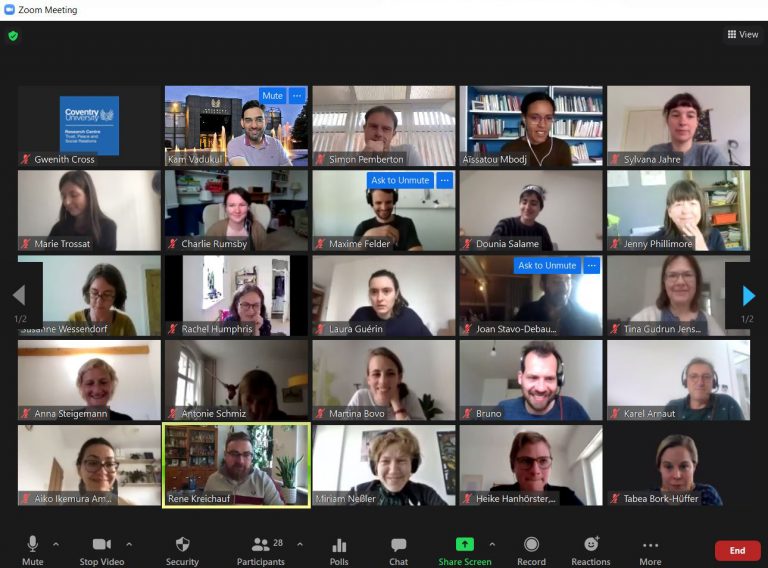AIMEC Kick-Off Event

More than 30 researchers from various research institutions across Europe who work in the field of migration, integration and urban studies, joined us for the AIMEC kick-off event on 26th of May 2021. As a team we were inspired by the insights these scholars shared on the conceptual framing of the AIMEC project. A big thank you to everyone who joined us!
The AIMEC project investigates the interactions and transfer of knowledge and resources between long-established migrants and more recent newcomers through Arrival Infrastructures. Arrival infrastructures are “those parts of the urban fabric within which newcomers become entangled on arrival, and where their future local or translocal social mobilities are produced” (Meeus, et al. 2019:1). Thus, they constitute concentrations of institutions, organisations, social spaces and actors that specifically facilitate arrival. We are interested in how arrival infrastructures facilitate the arrival and social mobility of newcomers, and what kinds of resources long-established migrants provide for newcomers. We seek to understand the role of differing national welfare and integration regimes in shaping arrival infrastructures on the local level and to investigate new forms of inclusion or exclusion that might emerge in such contexts.
The kick off event, aside from explaining the project and introducing the three research sites, was structured around a discussion of the following questions:
From your research experience, what role do you think the built environment plays for newcomers’ access to information and resources?
Do you think the arrival infrastructures approach is useful for looking at migrant integration?
What do you think our project’s policy implications could be?
We are aware that migrant arrival is not a homogenous experience and thus we wanted to have this critical discussion to challenge our assumptions and sharpen our theoretical and methodological approach.
Key Reflections
The vivid discussions and challenging commentaries provided by our guests questioned, but also affirmed our research approach. We agreed that the infrastructural lens offers the possibility to grasp the multiple directionalities, temporalities and subjectivities of arrival and settlement. Yet, we were reminded again that this must include both a discussion of migrant’s agency, their social networks and the structures that impact agency and mobility. Therefore, not only top-down institutionalised structures, but also bottom-up initiatives, informal opportunity structures as well as ‘ordinary’ public and private spaces need to be considered in the research.
The arrival infrastructural lens is particularly useful because it highlights initiatives and support in specific places, rather than looking at individual migrants and their integration trajectories. With this lens, we can capture both digital and tangible support structures. This also includes social organising which might not be tied to a specific place, but might be enabled by a physical space such as a church. Arrival infrastructures are thus ephemeral, both fixed and constantly changing.
Our discussions also underlined the important role of ‘new’ arrival spaces, such as camps and peripheral housing estate districts. Focussing on ‘classical’ arrival neighbourhoods, the AIMEC projects aims to understand the continuing role of these more traditional arrival areas and especially how long-established migrants living or working there facilitate the settlement process of those who are newly arrived. Building on our previous research, we know that it is rarely those migrants with high economic and social capital who need support, but it is those with limited economic, social and cultural capital, sometimes coupled with limited digital literacy, who are most in need of support and struggle to find this through formal channels.
Our discussions also highlighted that by looking at migrant arrival through an arrival infrastructural lens, we can capture what happens before ‘integration’, looking at initial arrival moments and urgent needs. By doing so, we are hoping to develop a categorisation of different types of arrival infrastructures to identify which ones are crucial during which point in time of someone’s pathway of arrival, and identifying different phases of needs during settlement.


